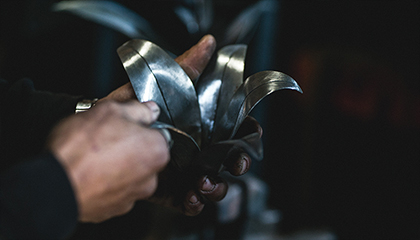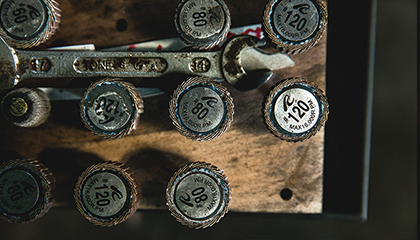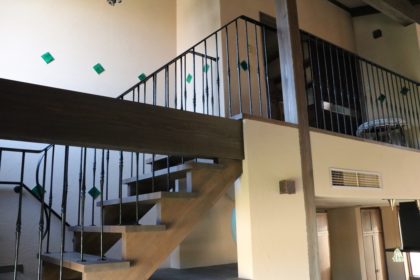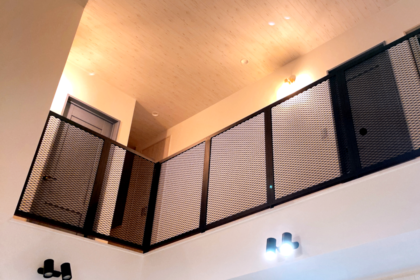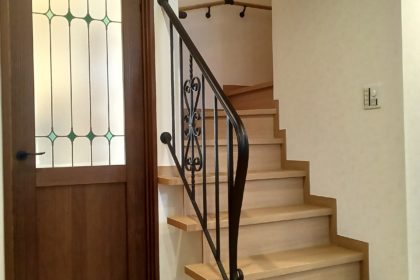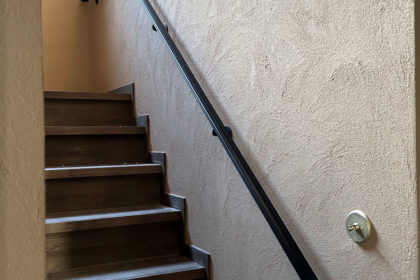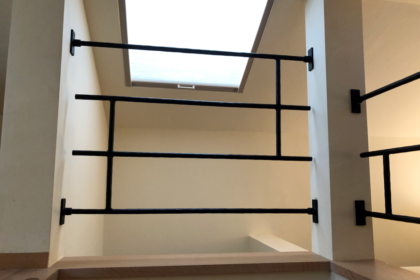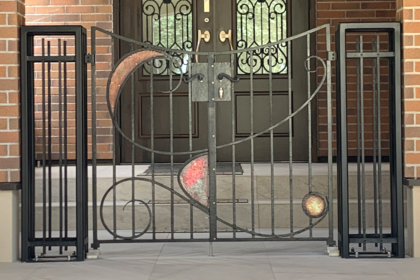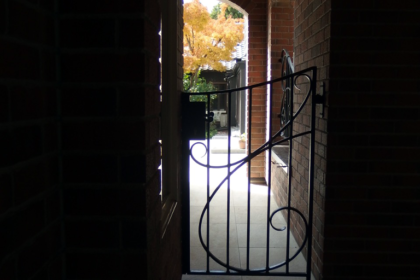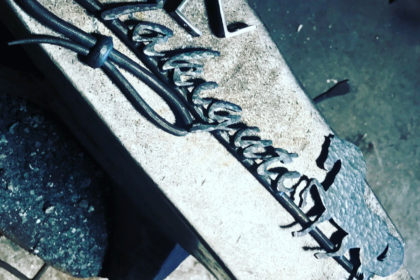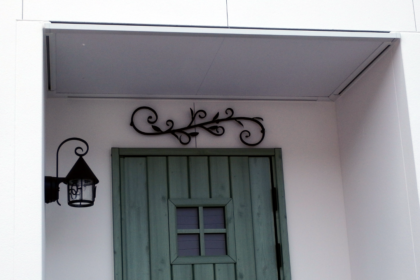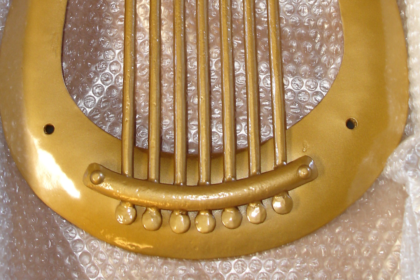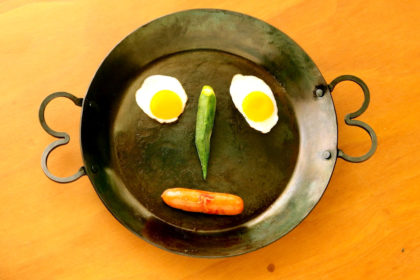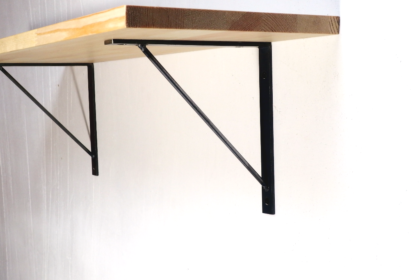A blacksmith, called “kajiya” in Japanese, is a craftsman who heats iron in a furnace and forges it by beating it with a hammer.
The number of blacksmiths has decreased in modern Japan, and no two products are the same with the forging completely done by individual workmanship.
Mainly focusing on wrought iron furniture such as gates or banisters with decoration, the craftsman creates works which draw the original charm of iron to the maximum level by leaving mallet traces or curves, and preserving the innate essence of iron, all owing to the manual labor involved.
The craftsman dares to choose works which require a long working time, as if the present time has gone back to former days.
While saying, “I want to become a craftsman before I am an artist. I am a person who is particular about lining, not the face of the clothes,” he produces wrought ironwork by placing the elements one by one into the fire.
The craftsman modifies the iron work until he is satisfied with the appearance of the work and examines carefully whether it expresses beautiful mallet traces, or has a good balance of its curves, or shows an ideal hue, or iron’s true color developments or not.
The craftsman continues to produce unique works which exist as one of a kind reflecting the excellence of the firing.
The same thing applies to the production of beautiful Damascus steel.
The craftsman challenges producing a monochrome contrast which is a demanding task without relying on dyeing, and also strives to produce beautiful patterns using materials which are challenging to work with in smith welding.
The craftsman laughs saying, "I have difficulties in what to use for materials, but the more trouble I have, the more I become addicted to the excitement I feel when I am finally able to produce the work which I had imagined.”
Damascene steel was originally used for knives.
The craftsman says he absolutely does not wants to make knives, though there are many requests for them.
Under this concept that the craftsman wants to create something you can enjoy with your eyes, or which brings calm when you are tired, he has been producing partitions, dishes, clock dials, and other items which enhance the user's life.
In the workshop, there lies one lily flower awaiting the final process.
It has been waiting longingly for the moment when the flower of Damascus will come into bloom.
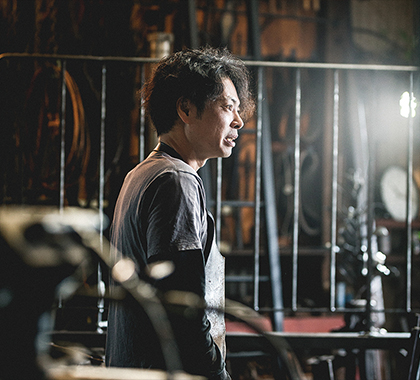
While grappling with the burning flame, he repeatedly tempers the steel, whose sheets overlap multiple times beginning to look like the layers of mille-feuille (puff pastry), then polishes and applies acid to produce a unique pattern.
Original Damascus steel is that produced in the Damascus region of Syria, its most magnificent feature being its soft curves or striped patterns as if water rings were emerging on the surface. Originally it was used as swords and other weapons. The craftsman proposes a work to incorporate into our daily lives as an ornament which makes use of its beautiful traces.
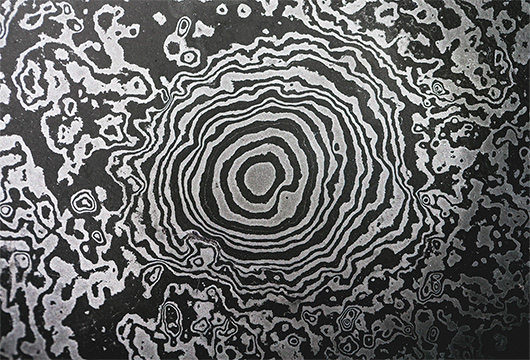
-
- 2024.04.17
- (JP) 美容院のアイアン看板施工例UPしておりますご覧ください!
-
- 2024.03.02
- (JP) 大正ロマン建築かおる邸宅に納めたアイアンの施工事例アップ致しました
-
- 2024.01.05
- (JP) 明けましておめでとう御座います
Higashihabumachi, Matsuyama-shi, Ehime,
791-8043, Japan
Open from 8:30 a.m to 17:30 p.m
(
Closed on Sundays)




